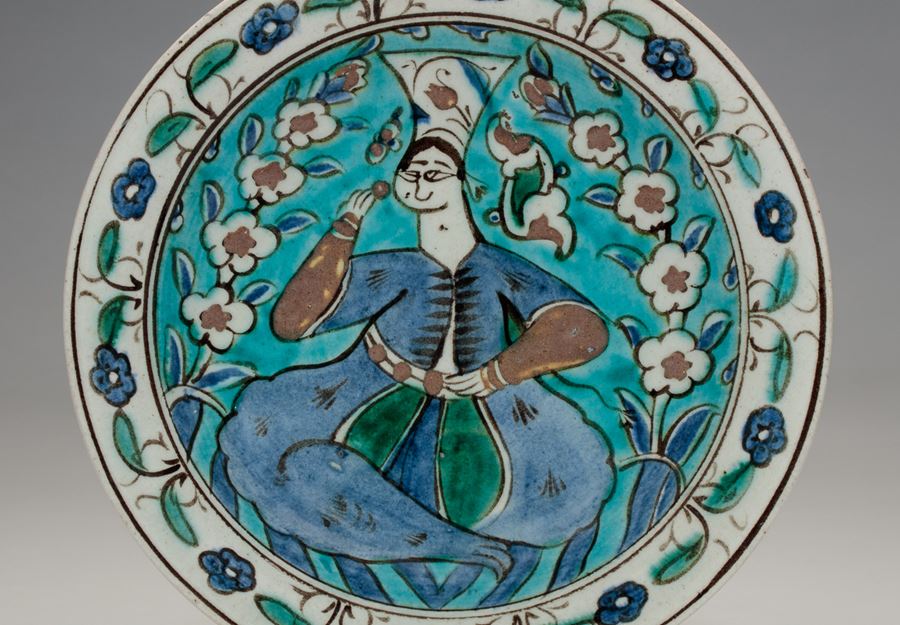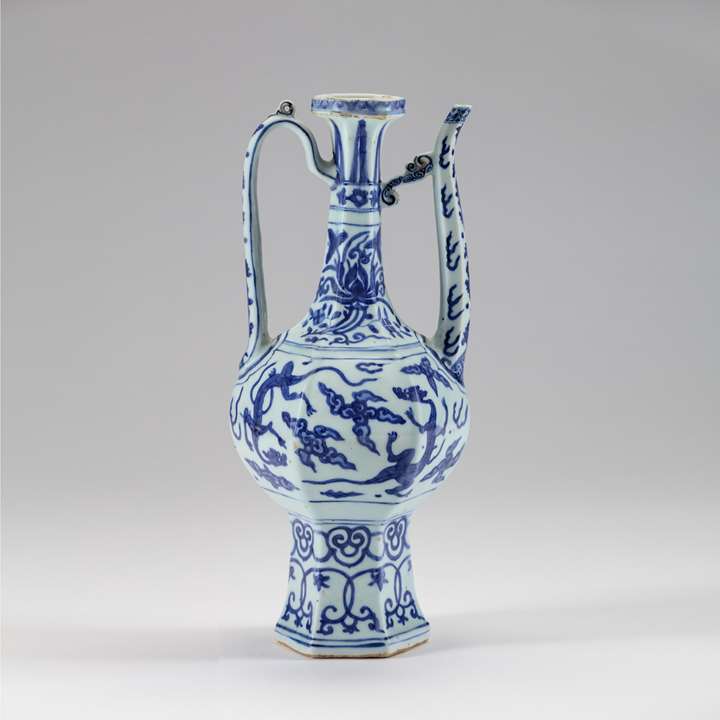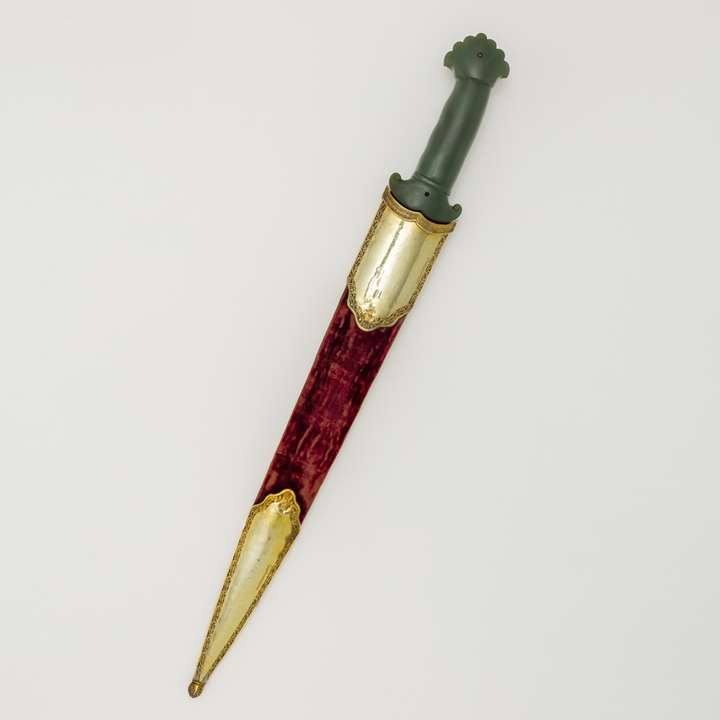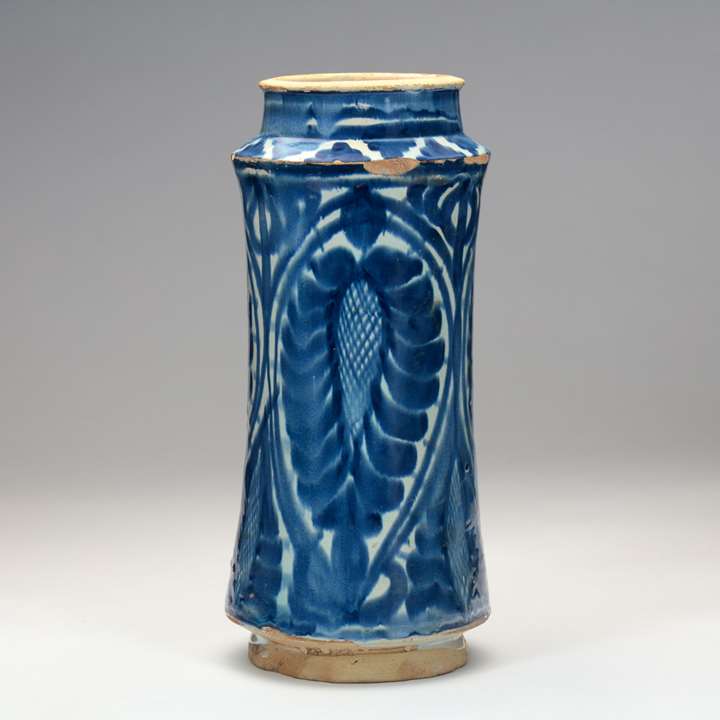Description & Technical information
This fritware tile would once have decorated the wall of an Ilkhanid building. It was made in Kashan in central Iran, a town so important to the production of
Persian pottery that it gives its name to the Farsi word for tile (kashi).1 Tiles were produced in Kashan almost continuously from 1200 to the 1330s.2 Star-and-cross dados, of which this tile was once a part, were used to decorate funerary monuments and palaces. Illustrations of the Persian court in the Shahnameh show star-shaped tiles on the floor and walls, such as Folio 202v from the 16th century Shahnameh of Shah Tahmasp, held in the Metropolitan Museum of Art (accession no. 1970.301.30).
This tile is decorated in reserve against a golden-brown lustre field. The border of the tile is outlined with cobalt blue. Curling split palmettes, highlighted in cobalt blue, close off alternating points of the star. Two half acanthus leaves form a circle at the centre of the tile. Nine dabs of turquoise decorate the tile, one on each point of the star and one in the centre. The use of these colours and forms is characteristic of early 14th century Kashan ware. Two tiles dating from the early 14th century in the collection of the Victoria & Albert Museum (accession nos 1024-1892 and 1828B-1876) feature similar curling split palmettes in four points of the star. A tile in the collection of the British Museum (accession no. 1947,1110.2) dating from 1337 also has a similar decorative scheme, featuring curved foliate motifs in alternate corners of the star, a circular foliate motif at the centre of the tile, and a dotted background.
Star-shaped tiles frequently have white bands inscribed with Persian poetry or Quranic verses in naskhi script. It is rare for tiles to have no inscriptions, however, examples such as the late 13th century tile on display in the Louvre (accession no. AD5152), thought to come from Takht-e Sulayman, do exist.
1 Porter, Venetia, Islamic Tiles. London: British Museum Press, 1995. 33.
2 Ibid., 33-34.

Discover the gallery
Amir Mohtashemi Ltd.
Indian,Islamic and Cross-Cultural Works of Art
More Works From This Gallery

Amir Mohtashemi Ltd.
Porcelain Ewer Made for the Islamic Market

Amir Mohtashemi Ltd.

_T638497236879872479.jpg?width=720&height=1200&mode=max&quality=60)




